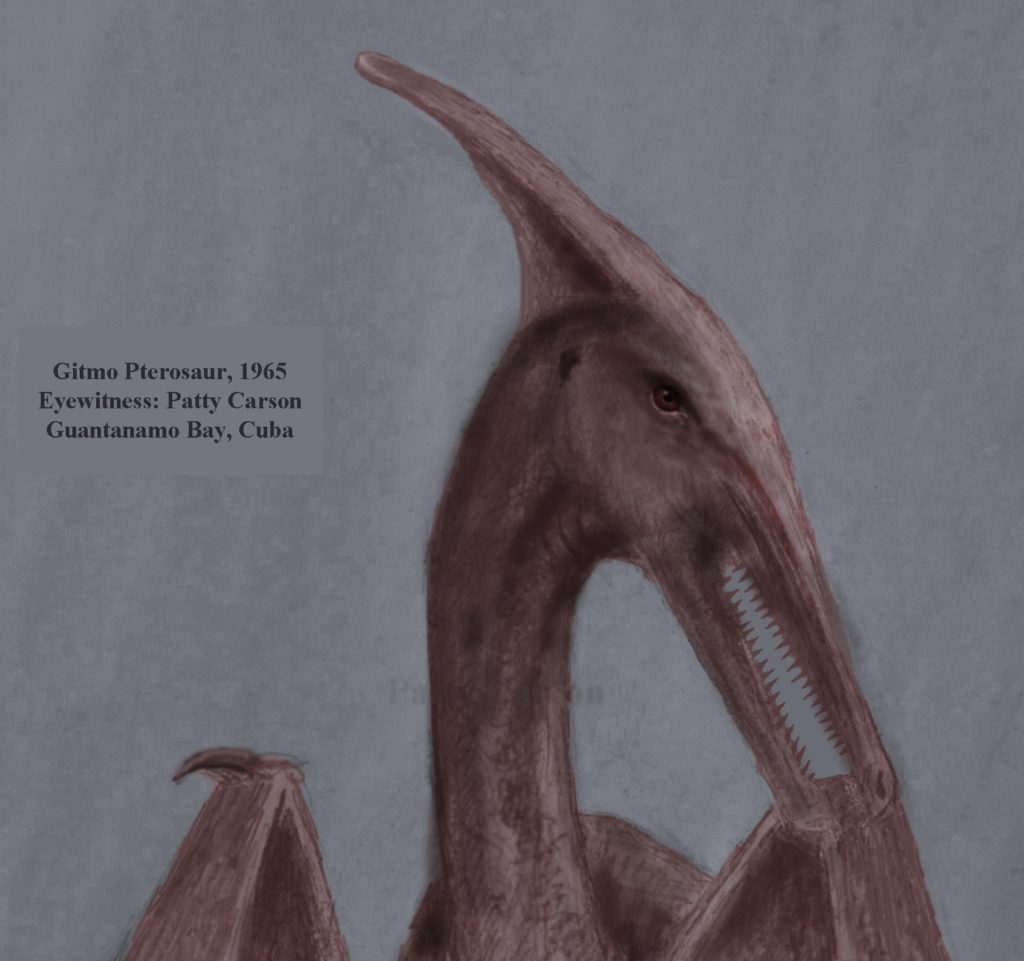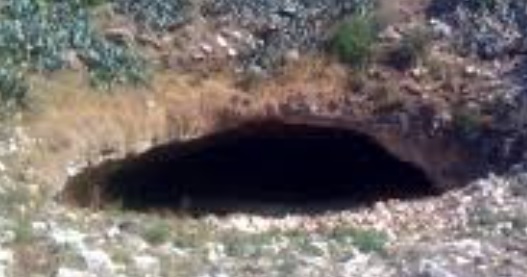A significant number of the eyewitnesses of ropens have given their real names, and most of them are still living, as of early 2018. Here is a list of sightings of these long-tailed modern pterosaurs, although this is only a partial list of the more important encounters, by eyewitness name, or by place if the eyewitness is anonymous:
Patty Carson
Her sighting was in 1965, at Guantanamo Bay, Cuba, when she was only about six years old. She immediately tried to tell her family about the flying “dinosaur,” but they did not believe her . . . at least not at first. Within about a year or so, however, her sister saw what may have been the same species of pterosaur, and her older brother also had a sighting.
Brian Hennessy
In recent years, he has worked as a psychologist, making it less likely that he had any mental health problem when he saw the large long-tailed flying creature on Bougainville Island, New Guinea, in 1971.
Keep in mind that Mr. Hennessy did not use the word ‘pterodactyl’ while reporting his sighting to Whitcomb in 2006, but on the other hand he did not say anything that contradicted the possibility that it was a pterosaur.
Duane Hodgkinson
With his army buddy next to him, this American saw a “huge” “pterodactyl” in a jungle clearing just west of Finschhafen, New Guinea, in 1944, after all the Japanese military had left that area. The wingspan he estimated as similar to that of a small private airplane.
Gideon Koro
This native of Umboi Island, Papua New Guinea, was interviewed face-to-face by Whitcomb in 2004, in his village. He estimated the length of the tail of the ropen at seven meters. It was obviously no fruit bat. Gideon was one of seven boys who had hiked up to the crater lake Pung around late 1993 or early ’94. This sighting, by seven boys, was in clear daylight, as the ropen flew over the surface of Lake Pung.
Eskin Kuhn
This U.S. Marine saw two “pterodactyls” flying together at close range to Eskin and at fairly low elevation, in 1971, at Guantanamo Bay, Cuba. Being a talented artist, he commenced sketching, from memory, those two long-tailed pterosaurs, within minutes of the sighting.
Lakewood, California (two eyewitnesses)
Two sisters each had a sighting of a long-tailed dragon-like flying creature, near the same backyard. Their sightings, however, were made with each sister unaware of the other’s encounter, and these views were in different years.
Sandra Paradise
This young lady saw a huge “pterodactyl” that flew in front of her car, while Sandra was driving east of Winder, Georgia, early one morning in August of 2008. She was shocked but quickly phoned a friend to report what she had encountered. She later reported her sighting to Whitcomb
Perth, Australia (two eyewitnesses)
In December of 1997, a couple was taking a walk between two residential neighborhoods, well into the evening, when they saw an approaching flying creature. Even at a distance, it looked huge. As it flew closer, it became obvious that it was indeed gigantic.
The husband, who was a scientist, estimated the wingspan to be between 30 feet and 50 feet. The tail was very long and the creature appeared to have no feathers. It may have had fine hair or small scales, but it was too difficult to make that out completely.
Susan Wooten
This young lady was driving on a major country highway in South Carolina, around 1986, when a huge long-tailed featherless creature flew in front of her car. She was shocked, as a number of drivers in other cars pulled over to the side of the highway.
.

Sketch by the eyewitness Patty Carson (sighting in Cuba in 1965)
.
A blog post by the investigative journalist Jonathan David Whitcomb
###
.
New book on eyewitnesses (children & adults) of living pterosaurs
I quote from this nonfiction book, although this is a preliminary form of these sentences in this book, The Girl who saw a Flying Dinosaur [long-tailed ropen in Cuba]
.
Press release: living pterosaurs in North Carolina
Jonathan Whitcomb, author of nonfiction cryptozoology books, has suggested that flying creatures reported in Raleigh, North Carolina, over several years, may be related to what Americans in other states have reported to him over the past fourteen years.
.
Ropen sightings in the USA
The author Jonathan Whitcomb looks into a storm channel in Lakewood, California, near where a “dragon-pterodactyl” was reported to have flown in mid-2012.
.
Live Pterosaurs for Kids
Patty Carson was about six years old when she and her brother saw this animal. Patty is grown up now. She is a good artist and drew this picture of what she saw . . .
.
Pterosaur encounters in the United States and around the world
I, Jonathan David Whitcomb, proclaim that not only are not all species of pterosaurs extinct but more than one species is living, and they range in extensive areas of the planet. During the past fifteen years, I have received reports of apparent living pterosaurs from six continents, most of which reports were directly from the eyewitnesses themselves. [Direct accounts were received by Whitcomb from five continents.]
.
Nonfiction books about the ropen
From the author: “Both nonfictions include the two sightings in Cuba, encounters by Patty Carson (1965) and Eskin Kuhn (1971), both of which were at Guantanamo Bay. [The books referred to on this site are Searching for Ropens and Finding God and Live Pterosaurs in America.]
.
Not all pterosaurs are extinct
Many species of pterosaurs have lived on this planet at some time in the past. What evidence is there that all of those species have become extinct? NONE!

